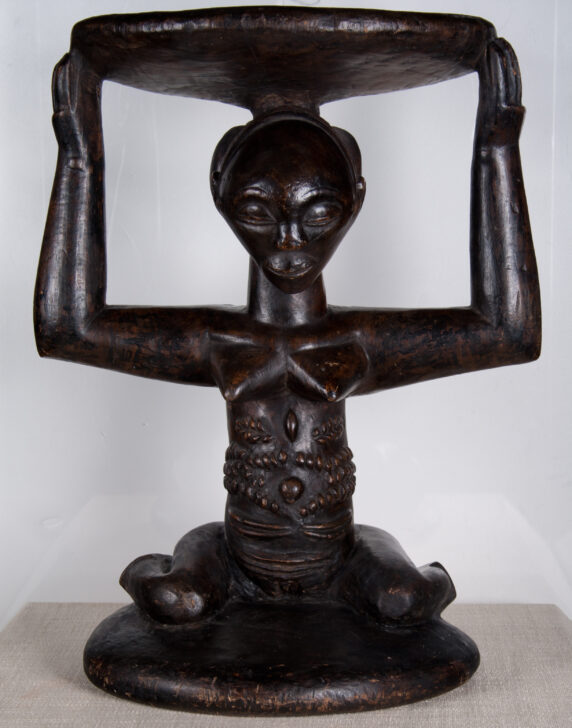Stool
Luba

Description
Stool
African, Luba People Democratic Republic of the Congo
1875-1900
wood
Gift of Robert and Lillian Montalto Bohlen, 2008/2.293
Paradoxically, Luba female figures often refer to the spirits of male rulers, as in the case of this caryatid stool portraying a kneeling woman. In the Luba kingdom, at least until the colonization by Belgium in the early twentieth century, women served as mediums for the spirits of deceased rulers; this role was symbolized in stools, the most important symbol of Luba kingship. More than a royal throne, a Luba stool is a symbolic microcosm of sacred spirit capitals-called bitenta-where the spirits of previous kings are guarded by female spirit mediums. While this intricately carved and shiny polished stool represents the Luba concept of beauty, the scarification on the woman's body and her elaborate hairstyle are far more than cosmetic practices. Scarification is believed to make a woman a more effective receptacle for spiritual embodiment and the particular pattern on the stomach contains messages about the sacred power of the king. Similarly, the intricate hairstyle speaks to the complexities of Luba political power as both female and male, both of this world and the other.
Usage Rights:
If you are interested in using an image for a publication, please visit https://umma.umich.edu/request-image/ for more information and to fill out the online Image Rights and Reproductions Request Form.